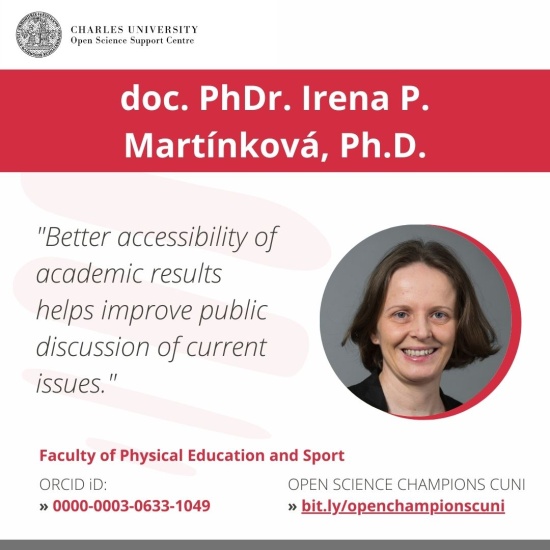 Department of History and Philosophy of Sport
Department of History and Philosophy of Sport
Faculty of Physical Education and Sport
ORCID: 0000-0003-0633-1049
Articles published in the open access mode are simply more accessible, both to academics, not all of whom have prepaid access to a given journal, and especially to the general public. Since my articles seek to improve the understanding and practice of sport, especially with regard to creating strategies for rule modification, I appreciate the opportunity to have the articles available to this group as well. For example, today one of the very visible and yet sensitive topics in sports is the topic of including transwomen in the female category. The discussion about this topic tends to be very narrow and one-sided – sometimes it is completely absent and the topic becomes a taboo. The accessibility of academic articles in this area is therefore important both for experts outside the academic sphere and for the general public. Academic articles help to broaden the view of the given problem, to find ways to communicate the topic and enable participation in the discussion, or to apply some of the results in practice. That is why I am happy that my articles can be published in an open access mode to be accessible to a wider public.
For me personally, this means downloading the articles I want to read quickly and easily, saving me time. On the other hand, for my articles it means an improvement in visibility and accessibility, and thus greater readership, possibly also citations.
The openness of science is important because the accessibility of new scientific results allows them to be read by a wider public, thereby improving our thinking about various topics and current problems, as well as improving the overall quality of public discussion. Of course, a necessary part of this shift is also for the public to learn how to find, read and interpret these articles, which should be part of education at universities. Going back to the above example of today’s discussion regarding the inclusion of transwomen in the female category, it seems to me that with new and accessible articles, the discussion in this area is really deepening and has improved.
Open access has different options for the openness of articles. Therefore, it is advisable first to read what options exist, then decide on the most suitable solution for the given article.
Articles are the results of our work and their aim is to contribute to the knowledge and discussion in the field in order to move it forward. After all, we write articles so that they are read, studied, criticized and that the ideas from them might be put into practice. If you’re doing research with this goal in mind, I don’t see why open science should be a problem.
Better accessibility of academic results helps improve public discussion of current issues.

Residency, Invoicing and Correspondence Address
Charles University
Central Library
Ovocný trh 560/5
116 36 Prague 1
Czech Republic
Office Address
José Martího 2 (2nd floor)
160 00 Prague 6
Phone: +420 224 491 839, 172
E-mail: openscience@cuni.cz
Www: openscience.cuni.cz